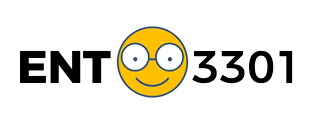DAILY QUOTE
"A person who never made a mistake never tried anything new." Albert Einstein
One of the most common mistakes first time founders make is that they focus too much time and energy on building and launching their product while neglecting the difficult (and less exciting) task of talking to potential customers first. This is the reason why Steve Blank, the author of the Lean Startup process that has revolutionized how we approach entrepreneurship, says that he "doesn't work with first time founders."
In this section, we will explore one of the most critical aspect of your entrepreneurial journey--strategies to validate demand for your product. This starts by first identifying early adopters. This is important because the path to success is through identifying small customer segments. Those are people who have the same problems (not necessarily the same demographics).
The fastest way to validate problems is to talk to early adopters or the people who are already trying to solve the problem. Thus, we will look how and where to find early adopters. If you can't find early adopters, then it's likely that you won't be able to find people to pay for your product once you launch it. You can watch the following videos to help you figure out how to identify your early adopters: [video 1 ][video 2].
Second, we will learn how to interview people. One of the mistakes that first time founders make when talking to customers is to try to pitch their product or solution to the problem. Of course, there is a time and place to pitch your product, but in this early stage of your venture, you should be interested in collecting data to validate your problem. By suggesting a solution to a problem, you may lead people to give you misleading answers. Therefore, we will study the best ways you can approach interviewing potential customers [guide on how to do interviews]. Here is a useful video to help you think about interviewing customers [watch here].
Once you validate your product, we will discuss the importance of building an MVP (or minimum viable product). There is no better way to validate your product than examining the market response. The most important thing to remember here is that "done is better than perfect."
For years, the standard validation approach used by Corporations (also called the Waterfall approach) has been to build and test a product over a long period of time and then release and validate it. However, this approach is extremely risky, requires a large budget, and, more often than not, is not feasible for most first-time founders.
Instead, we will follow the so-called Lean approach, which is based on multiple quick iterations (and checkpoint validations). Here, the goal is to validate individual hypotheses through multiple experiments in order to to take the risk out of decision making. Overall, it is much better to have a product you can get out there and test customers' attitudes as opposed to waiting for years to develop the perfect product. It's even better to test your assumptions with something that is put together quickly rather than spend years developing your product only to find out that there is not much demand for it.
You can watch the following video from the CEO of Y-combinator explaining what is an MVP and why is it important [watch here].
You can use the following validation guide by the Board of Innovation for ideas how to perform different experiments [read here].
Here is an example of how students in a previous class validated their product [download PPTs].
In this section, we will also learn how to create a pre-launch website where you can collect information on potential customers and an explainer (promo) video that you can use on your website or for a crowdfunding campaign. Here is an example of a package created by students in a previous class (video is on slide 2) [download PPTs]. Other sample videos [watch here][and here][and here].
Finally, once you create your YouTube (or explainer video) [here you can watch an excellent explainer video], you can use the following strategies to perform a sales experiment that will allow you to collect data on your value proposition. For example, you can use the following strategies: (1) post on social media (e.g. Instagram, Facebook, Twitter, LinkedIn, etc.), (2) post on forums like Reddit, Facebook groups, Google Groups, Yahoo groups or topic specific sites, (3) distribute flyers on campus, (4) distribute handouts on campus (e.g., cafeteria, library, dorms, etc.); (4) talk to people on the street at bus stops, outside grocery stores, at the airport, etc.
If you don't have experience with web design or video production, don't panic. There are plenty of solutions that allow you to quickly create websites, pre-order forms, and explainer videos. Here is a series of three videos that shows you how to do this (credit: TeachingEntrepreneurship.org] [creating a landing page][adding pre-orders][creating an explainer video].
Overall, we will learn that launching your product is easy. However, selling your product is difficult. And, this latter part requires the type of work that most first-time founders don't particularly enjoy (e.g., interviewing customers).
QUESTIONS TO THINK ABOUT AS YOU DO THE READINGS
1. How to identify early adopters.
2. How to interview customers in order to validate your problem (and later solution).
3. What is an MVP and why is it important?
4. How to create a pre-order landing page (and collect information on customer interest).
5. How to create an explainer video.
6. Strategies to validate demand for your product.
7. Other ways to validate demand for your product.
REQUIRED READINGS/VIDEOS
- Validation Guide by Board of Innovation [read here]
- Interview Guide by by Board of Innovation [download here]
- Problem Validation (example questions) [download here]
- How to plan an MVP [watch here]
ASSIGNMENTS
1. Note that there is no quiz for this week. Yay!
2. Come up with a strategy how to validate your problem and solution. Write down the steps you are going to take. More specifically, list all of the experiments that you think can help you validate your demand, testing various assumptions you may have for your product. You don't have to submit a paper. However, note that showing progress toward validating demand for your product is a critical aspect of your final pitch and presentation. Therefore, I encourage you to take this homework assignment seriously.

